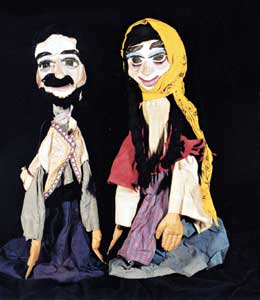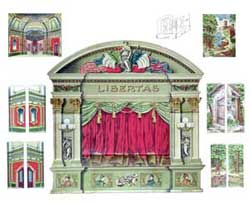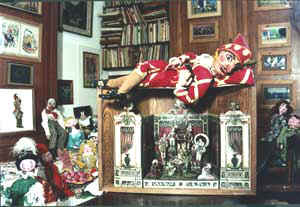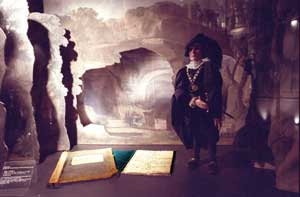|
Collezione Maria Signorelli
|
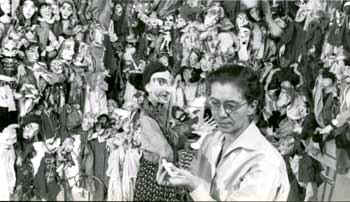 Maria Signorelli
Maria Signorelli
Born
on 17 November 1908, Maria Signorelli was the eldest of the three daughters of the Latvian writer (and
doctor) Olga
Resnevitch and Angelo Signorelli, who was
one of the first Italian radiologists.
From her earliest years Maria was keenly receptive of the wealth of fascinating impressions provided by her family circle and by the literary
and artistic salon that her father and,
particularly, her mother (a devotee of the theatre and biographer of Eleonora Duse) held for
many years in Rome, in their home.
|
|
|
|
|
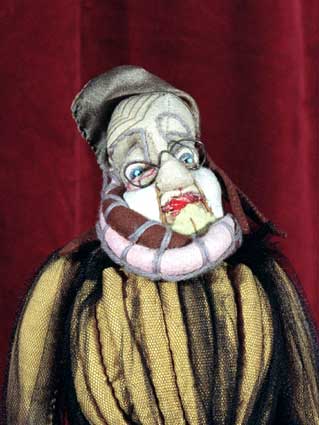
The
Puppets - "i fantocci" - by Maria Signorelli
Maria Signorelli's series of puppets known as the fantocci are amongst the most original creations of Italian - and indeed European - figurative art of the early 20th
century.
The director Anton Giulio Bragaglia, in March 1929 at his gallery in Rome, was the first to exhibit them; the following year Giorgio
de Chirico presented them in Paris, whence they moved on to Berlin.
It was the beginning of
an international career.

|
|
|
|
|
|
|
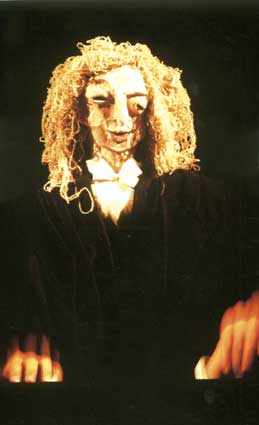 Puppets
by Maria Signorelli Puppets
by Maria Signorelli
Maria Signorelli’s puppets are of several hundred characters created
from the 1940s to the 1990s for 159 different productions; for dance shows, for fairy tales, nursery rhymes and films for children, for
plays with classical and modern texts, and film. They are difficult to define as regards typology,
because the artist constructed them according to their individual requirements, that is, the movement and function they had to have on
stage......
|
|
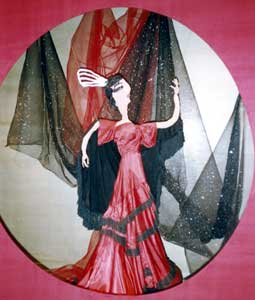
The dance shows
by Maria Signorelli
"... the
puppet ballets have become the most important and engaging part of my theatre, the one where I feel most free to reveal the two
leading elements of my compositions, colour, and rhythm…" .....

|
|
 VIDEO VIDEO
Maria Signorelli: I Fantocci
1920 - 1930 https://vimeo.com/319240531
Si
crea l'incanto https://vimeo.com/214389116
La casa dei burattini
https://vimeo.com/121911945
Vilnius
https://vimeo.com/315353351
La Valigia dei
Burattini
|
|
|
|
|
|
|
|
|
|
|
|
|
|
The
fairy tales, nursery rhymes and films.
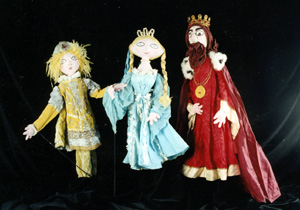
‘I came to the profession of puppeteer after many years as theatre costume and set designer ... I chose the puppet, moved by the hand of man itself and not the marionette, operated by
strings, because I found that it could better express the most intimate nuances of the character and because the puppeteer who gives it life can really do so, with the greatest abandon, with his whole
soul.’..”
|
|
Shows
with classical and modern texts, films.

‘Theatre is performed in a great variety of styles.
One must
know in which style one wants to work
and then find the appropriate techniques .
raditional techniques or new techniques?
Puppets or marottes,
or shadow
or rod puppets?’......
|

|
|
|
|
|
|
|
|
|
The main
sections of the Maria Signorelli collection
|
|
|
|
|
|
|
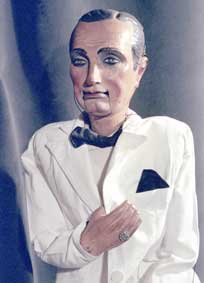 Podrecca
Fund Podrecca
Fund
(string
puppets, sets, set designs,documentation)
The Fund belonged to the Compagnia dei Piccoli of Vittorio Podrecca (1883-1959), one of the legends of
twentieth-century Italian theatre. Created in Rome on the eve of the First World War, from 1914 to
1966, therefore even after the death of its creator, this puppet company was famed in Italy and
beyond for its great artistic talents and technical skills.... 
|
|
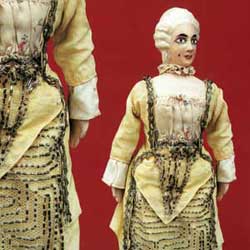 Trieste
puppets, Trieste
puppets,
with relevant sets and stage
properties of
various scenes
There are around two hundred puppets 20 to 30 cm tall, which belonged to a non-identified
aristocratic Trieste family from the early years of the twentieth century. They are in an excellent
state of preservation: as the puppets were not acquired together with play scripts, it is thought
that they were intended for an
adult audience, and used for
works connected
with actual events of the time.......
|
|
|
|
|
|
|
|
|
|
|
|
Italian rod and glove puppets of the nineteenth and twentieth centuries

It
is generally known that puppet theatres have existed from the sixteenth century on, but their enormous popularity in the
nineteenth century is also recorded by a considerable amount of evidence,
both visual (for example, Bartolomeo Pinelli’s lithographs and Dura’s coloured engravings) and literary (from
D’Azeglio to Belli, Stendhal, Andersen and Gregorovius, to name just a
few).... 
|
Italian marionettes of the nineteenth and
twentieth centuries
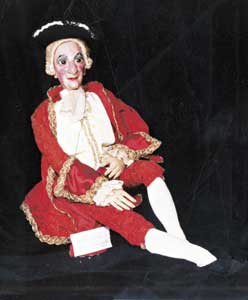
This section comprises around two hundred items of varied provenance, ranging from 75 to 110 cm in height. There
are very famous examples here, as also the whole of the splendid series (around 80cm tall, complete with sets and
photographs taken at the time) used for the play Cristoforo Colombo by the famous Genoese Ugo Ponti (1850-1919)...
|
Italian marionettes of the
eighteenth century

In the eighteenth century, a century rich in theatre, the marionette created extraordinary interest. Unlike the
rod puppet, which was of lower-class origin, it was widespread in aristocratic circles, answering, among other things,
to the architectural taste of the period..... 
|
|
|
|
|
|
|
|
|
|
|
Shadow puppets
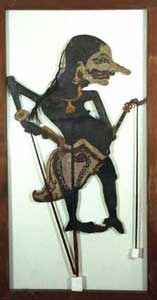
This section comprises around one hundred items, from China, India, Malaysia, Thailand, Indonesia, Turkey and
Greece. The oldest shadow puppets go back ....
|
|
|
|
|
|
|
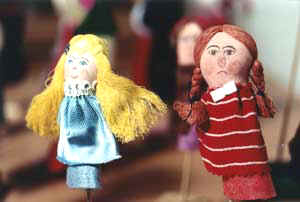 Toy
rod, glove and string puppets
This section comprises marionettes and puppets of various type (finger, cone and rod) constructed from the first
years of the twentieth century up to our own times, totalling around 330
items. Toy
rod, glove and string puppets
This section comprises marionettes and puppets of various type (finger, cone and rod) constructed from the first
years of the twentieth century up to our own times, totalling around 330
items.
..... 
|
|
|
|
|
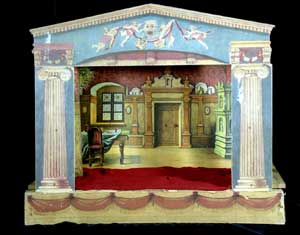
Toy theatres
In this section there are a series of toy theatres, predominantly from Poland, fitted with backcloths of
coloured board around 40 x 30cm in size, and characters constructed like rod puppets, around 20cm......

|
|
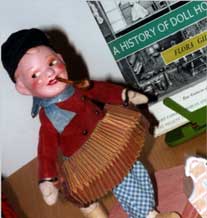
Dolls
Roughly 300 items, dating from the eighteenth to the twentieth centuries. Varying in size, from a few
centimetres to 80cm, and of various materials (cloth, porcelain, wood, papier mâché, among others), from
many continents.
......
|
|
|
|
|
|
|
|
Sicilian
(Catanian, Palermitan ), Pugliese and
Neapolitan puppets
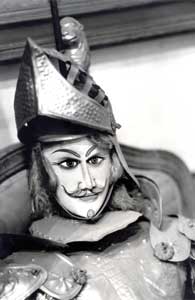
This section comprises thirty items, mainly from Palermo, among them a Rinaldo of 1890 with a richly embroidered
costume and workmanship betraying a mixture of various styles....
|
|
Eastern and Wayang puppets
and marionettes

Around sixty items
constitute a particularly interesting collection, thanks to the variety of their methods of construction, testimony to the diversity of
craftsmanship and techniques of countries as different as, for example, China and Pakistan,
Indonesia and Japan. .......
|
|
|
|
|
|
|
|
Italian and foreign literature on the
history and techniques of puppet theatre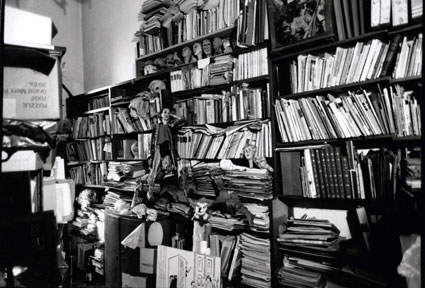
Having herself a vast and profound theatrical
knowledge, as artist and
collector who not only ceaselessly created items for her own productions, but wrote books and articles relating to her technical
discoveries and her historical researches, Maria Signorelli obviously had an enormous library..
|
|
Seven
trunks of stage properties (costumes and accessories; sets and wings; string supports, separate parts of puppets and
marionettes)
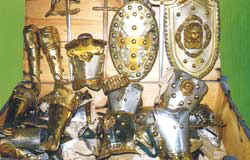
There are two trunks of female costumes (skirts,
bodices, collars) and male costumes (cloaks, trousers, belts, jerkins) for marionettes, excellently preserved, in silk,
velvet, satin, cotton, some finely embroidered (with sequins and jais), of cut and style belonging to various periods....
|
|
|
Masks
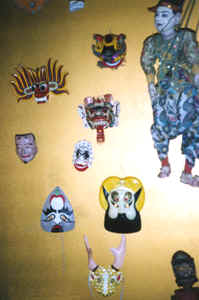
The
Collection includes around sixty items dating from the beginning of the twentieth century, from various countries: thirty
masks are Asian, while the others were collected primarily from Africa, Europe and Mexico.
........
|
|

|
|
 up
up
 cookies
policy cookies
policy
| |
|





 VIDEO
VIDEO 







